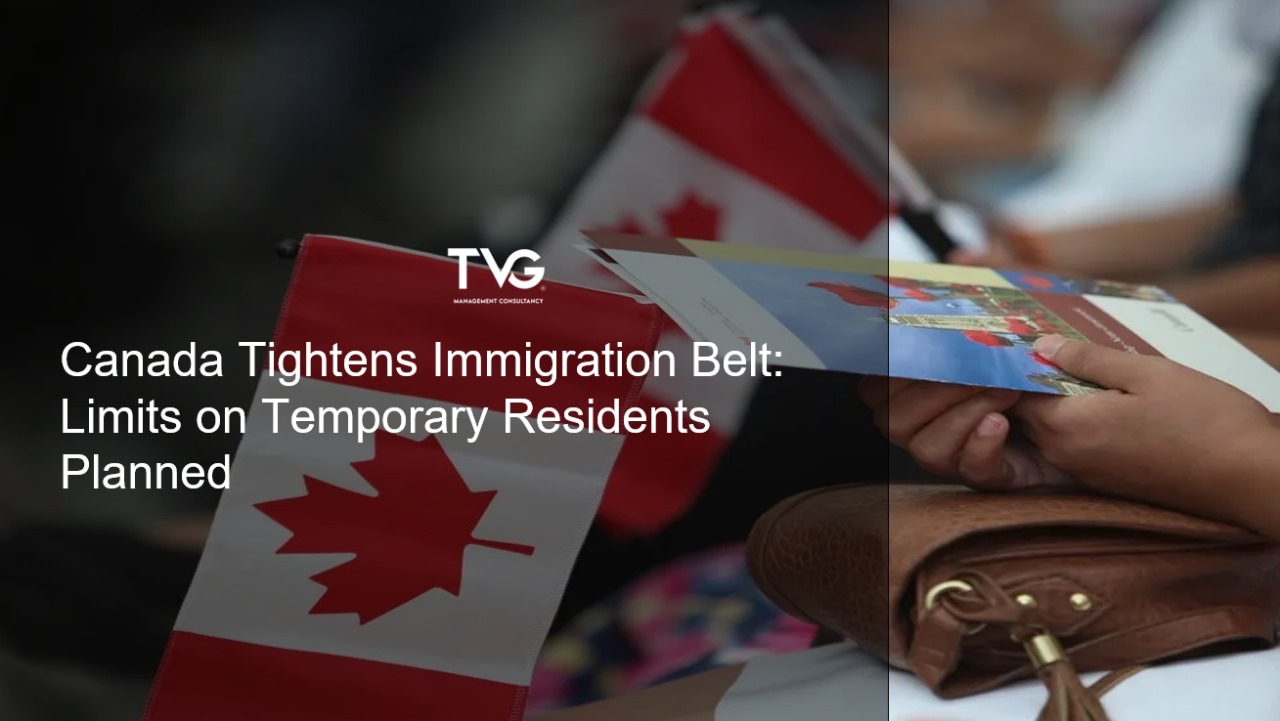Canada, long known for its welcoming immigration policies, is shifting gears. In a recent announcement, Immigration Minister Marc Miller revealed plans to set limits on temporary residents for the first time in the country’s history. This significant change comes amidst concerns about housing affordability and pressure on social services.
Why the Change?

The number of temporary residents in Canada has grown considerably in recent years. By 2023, it reached a staggering 2.5 million, accounting for 6.2% of the total population. This rapid increase has sparked a national conversation about its impact on Canadian society. Here’s a deeper dive into the government’s reasoning:
Housing Strain:
A major concern is the tight housing market. With a significant influx of temporary residents competing for a limited housing stock, affordability has become a challenge for many Canadians. The government believes reducing the number of temporary residents will ease pressure on the housing market and allow for more sustainable growth.
Social Service Strain:
Another concern is the strain on social services like healthcare and education. A rapidly growing population, both temporary and permanent, can lead to longer wait times and pressure on resources. The government hopes this policy will allow them to better manage these services and ensure quality care for all Canadians.
Labor Market Impact:
While Canada seeks skilled workers, there are concerns that an overreliance on temporary foreign workers (TFWs) can displace Canadians or suppress wages. The government aims to strike a balance, ensuring businesses have access to needed skills while encouraging the training and development of a strong domestic workforce.
Integration and Retention:
Canada wants to attract newcomers who will immigration to cananda into communities and contribute to the long-term success of the country. By prioritizing permanent residents, the government hopes to encourage newcomers to build a life in Canada and contribute their skills and talents over the long haul.

What to Expect
Impact on Industries:
Certain industries heavily reliant on temporary foreign workers, like agriculture or hospitality, might face labor shortages in the short term. The government may introduce measures to ease the transition, such as retraining programs or facilitating the automation of specific tasks.
The “Double Cohort” Challenge:
Canada is also grappling with the “double cohort” challenge, where a surge in baby boomer retirements coincides with a smaller pool of young Canadians entering the workforce. Temporary residents can help bridge this gap, so the government will likely prioritize attracting skilled temporary workers in critical sectors while the permanent resident pipeline adjusts.
Streamlined Applications:
To manage the application process efficiently, Immigration, Refugees and Citizenship Canada (IRCC) might introduce more streamlined online application systems and invest in faster processing times.
Impact on Different Groups
The new policy will likely impact various groups seeking temporary residence in Canada.
- International Students: Canada previously announced a cap on international student visas, reducing admissions by an estimated 35%.
- Foreign Workers: Businesses reliant on temporary foreign workers (TFWs) can expect stricter requirements. They’ll need to demonstrate efforts to fill positions with permanent residents or Canadians first, with a shorter window for applications. Exceptions exist for sectors facing critical labor shortages, like construction and healthcare.
- Asylum Seekers: The details surrounding how this policy will affect asylum seekers are still emerging.
What it Means for You
If you’re considering temporary residence in Canada, stay informed about the evolving situation. Immigration consultants like TVG Migration can provide valuable guidance as the new policies take shape. They can help you assess your options and navigate the application process under the new regulations.
Looking Ahead
Canada’s move to limit temporary residents reflects a national conversation about balancing immigration with domestic needs. While the road ahead may involve adjustments, Canada remains a country committed to attracting skilled individuals to contribute to its economy and society.
FAQs:
- By how much will Canada reduce the temporary resident population?
The plan aims to bring the temporary resident population down to 5% of the total population within the next three years. This represents a significant decrease, potentially impacting hundreds of thousands of hopeful temporary residents.
- Will the reduction apply equally to all categories of temporary residents?
Specific targets for different categories (international students, foreign workers, asylum seekers) will be established by September 2024. Regional variations are also expected, with areas facing labor shortages potentially receiving higher allocations.
- How will the new policy affect processing times for temporary resident applications?
The government might introduce streamlined online application systems and invest in faster processing times by Immigration, Refugees and Citizenship Canada (IRCC) to manage the application influx efficiently.
- I’m currently a temporary resident in Canada. Will this affect my status?
The government has indicated a phased reduction, with stricter requirements implemented gradually over the next three years. This may provide some breathing room for existing temporary residents. Additionally, Canada might prioritize pathways for existing temporary residents to transition to permanent residency.
- I work in an industry reliant on temporary foreign workers. Should I be worried?
Certain industries might face labor shortages in the short term. The government may introduce measures like retraining programs or automation initiatives to ease the transition. However, Canada still faces a “double cohort” challenge with workforce gaps. They might prioritize attracting skilled temporary workers in critical sectors until the permanent resident pipeline adjusts.










Leave a Reply